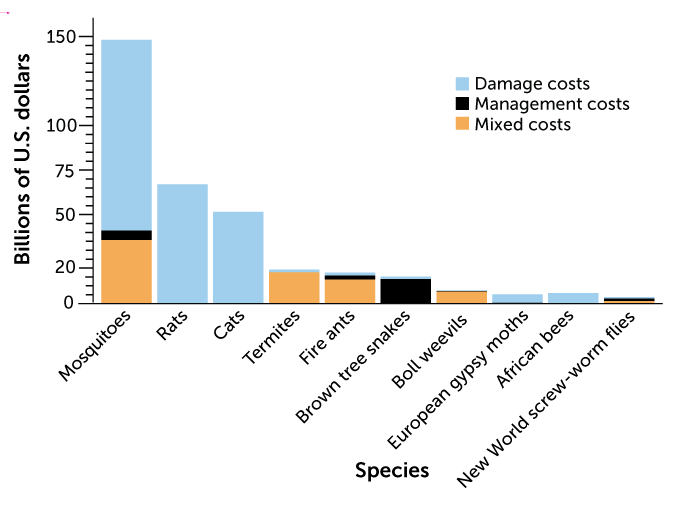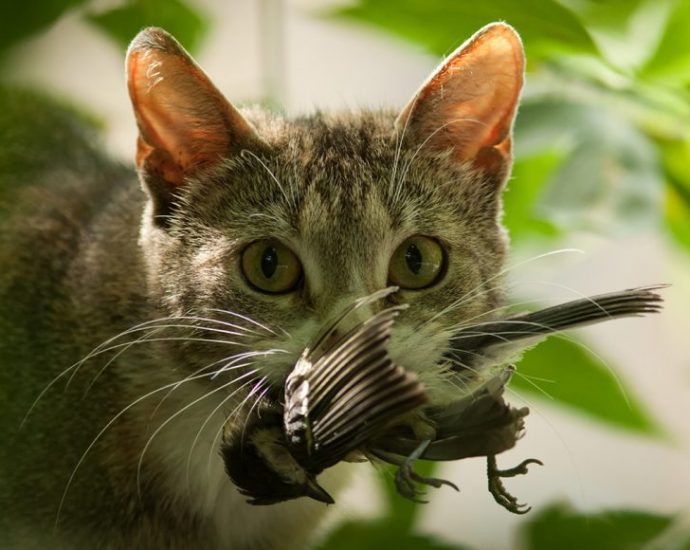The global impact from invasive species has cost more than $1 trillion since 1970
Invasive species can wreak havoc on ecosystems. These organisms settle into and cause harm in places where they aren’t native. For example, mosquitoes spread diseases. Cats kill birds and some mammals. Many insects chew up crops or kill trees. Such damage can be very costly. So is managing the mayhem they cause. New research suggests that just between from 1970 and 2017, invasive species cost the world at least $1.28 trillion.
“By estimating the global cost, we hoped to raise awareness of the issue,” Boris Leroy tells Science News. A biogeographer, Leroy studies how life, such as plants and animals, spread across regions. He works at the French National Museum of Natural History in Paris. Researchers have studied invasive species for decades, he says. But many people remain unaware of the problems these eco-bullies cause.
Leroy and his team set out to tally that cost. They scoured research papers for estimated costs of specific invasions. They came up with 1,319 studies to analyze. To find long-term trends in costs of invasions, the researchers used a computer model. It let them account for currencies used in different countries and how the value of money changed over time.
The new study examined costs of dealing with damage plus the cost of managing the species. Damage control cost about $892 billion. That’s 13 times more than the $66 billion spent on such efforts as ousting invaders or controlling their spread. The total yearly cost of invasive creatures doubled roughly every six years between 1970 and 2017. In 2017, that annual bill reached $162.7 billion, the team reports March 31 in Nature.
Many invaders hitch a ride to new places via cargo ships and planes. So inspecting cargo or monitoring for new pests could help lower the cost of invasions, says ecologist Helen Roy. “It’s much cheaper than waiting for the species to establish and spread widely before responding,” she says. Roy works at the U.K. Centre for Ecology and Hydrology in Wallingford, England. She was not involved with the study.
The new results are likely an underestimate. That’s because research on invasive species doesn’t capture the whole problem. For instance, more reports focus on North America and Europe than on what’s happening in South America or Africa. And pests that harm crops, such as insects, get more attention than do invasive plants. However, Roy notes, the study does show that invasive species are “a massive problem that’s getting worse.”
Costly critters
Researchers analyzed papers from the past few decades to pin down the most expensive invaders. This bar graph shows the results. Total costs for each species are broken down into three categories: damages, costs for managing the species and mixed costs. Mixed costs don’t fit neatly into either damage or management costs.

Data Dive:
- What was the cost of the most expensive invasive species?
- Look at the different colors making up that first bar. Roughly how much of the total cost is due to damage? How much of the cost is due to management?
- Which three invasive species have cost the most damage? What is the total damage cost of these three creatures?
- Which invasive species has the highest management cost?
- How many of the 10 costliest invaders are insects? How many are mammals? How many are reptiles?
- Choose one of the species. What kinds of damage can this creature cause? How might this animal affect other wildlife? How might it affect people? How might this animal affect crops or buildings?





















